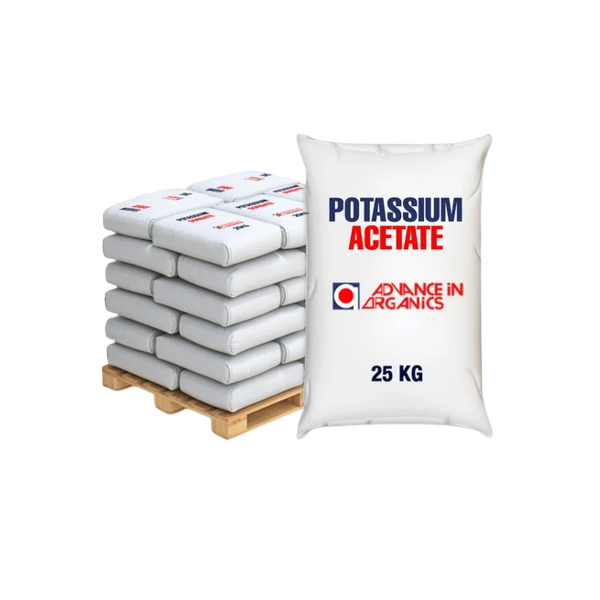


No products in the cart.
Potassium acetate is a chemical salt resulting from the combination of the potassium ion (K+) with the acetate ion (CH3COO-), derived from acetic acid. Its chemical formula is CH3COOK. It generally comes in the form of a white crystalline powder or granules.
Potassium acetate (CH3COOK) has several properties, including physical, chemical, and uses. Here are some key properties:
Physical Properties:
Chemical Properties:
Uses:
De-icing Agent: As mentioned earlier, potassium acetate is used as a de-icing agent, particularly in environments where chloride-based de-icers might be corrosive or environmentally undesirable.
Safety Considerations:
While potassium acetate is generally recognized as safe when used in food and pharmaceutical applications, it's important to follow appropriate safety guidelines for handling any chemical substance.
Inhalation or ingestion of large quantities can have adverse effects, and exposure to eyes or skin should be avoided.
Environmental Impact:
Potassium acetate is considered more environmentally friendly than some other de-icing agents. It is less harmful to vegetation and has lower environmental impact.
Storage:
It should be stored in a cool, dry place away from incompatible materials.
Data sheet